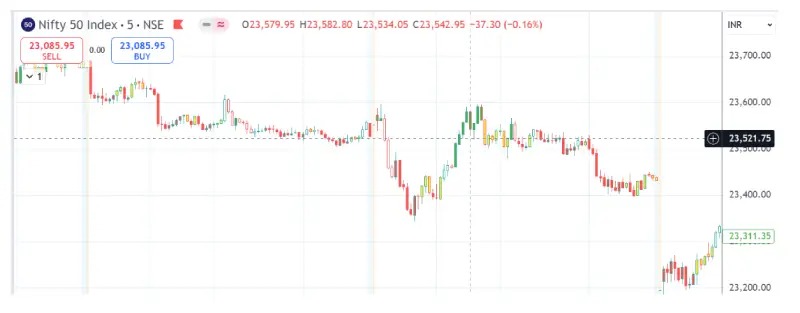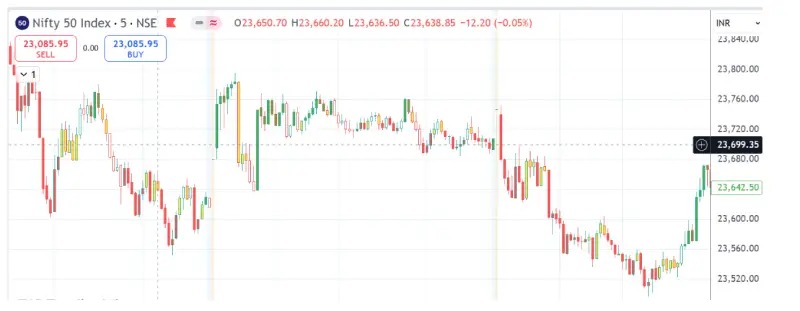What is Colour Trading?
Understanding Trading with Colours
It was a sunny winter afternoon in the financial centre of Mumbai in the spring of 2025. Before the day began, the city buzzed with its usual energy—traders hurrying about, preparing for the market’s opening, and their lively chatter filling the air. Among them was Rohan, a young trader just stepping into the vibrant world of finance. Rohan, a young trader, joined the club of traders, who recently discovered a strategy called trading with Colours. He became so curious that he started wondering how he could use it to draw his trading path more easily.
What is Colour Trading?
Rohan learned that trading with colours is a unique trading strategy that uses colours to represent market trends and signals. While green signals indicate it is time to 'Buy!', red signals mean a bearish market: 'Sell it now!' Signals between yellow signify caution; the market can move in either direction. Instead of deciphering complex graphs and numbers, traders can instantly gauge market conditions through colour-coded trading indicators:
- 🟢 Green: Signals a bullish market, indicating rising prices and a good time to buy.
- 🔴 Red: Indicates a bearish market, signaling falling prices and a recommendation to sell.
- 🟡 Yellow: Warns of caution as the market could move in either direction.
- ⚪ White: Reflects a sideways market with little movement.
This simplicity resonated with Rohan, making trading less overwhelming and easier to follow.

Start investing! Account opening in less than 5 minutes - Sign Up Now!
Benefits of Trading with Colours
Rohan found several advantages in this approach:
- Simplicity: Colour-coded signals enable simplified trading by making it easier to understand market conditions, especially for beginners navigating candlestick charts, without requiring extensive data analysis.
- Trend Recognition: Spotting market trends becomes straightforward, enabling quicker decision-making. The dynamic interplay of buyers and sellers, represented by candlestick formations, reveals market direction without deep chart scrutiny.
Impact of Colour Trading on Beginners
Incorporating trading with colours into his strategy, Rohan noticed:
- Quick Responses: He could react swiftly to market changes, especially during green-to-red or yellow-to-green shifts.
- Reduced Stress: The simplified process boosted his confidence and saved time, helping him focus on decisions rather than extensive analysis in stock trading.
Who Can Use Colour Trading?
Rohan realized that trading with colours is not limited to only beginners. Additionally, it is for:
- Casual Traders: Those who trade occasionally find it easier to use.
- Active Traders: Even experienced traders can use it as a complementary tool to traditional methods as they rely more on price action.
Market Challenges
Rohan also discovered the challenges of colour trading during volatile markets:
- False Signals: Rapid price movements could generate misleading green or red signals.
- Emotional Decisions: Relying solely on colour cues sometimes led to impulsive actions driven by emotional trading rather than logic.

Comparison
To address these challenges, Rohan compared colour trading with other methods:
- Simplicity vs. Depth: Trading with colours is easy but lacks detailed insights offered by tools like stop-loss orders and portfolio diversification.
- Short-Term Focus: While it is suited for quick trades, it doesn’t always account for long-term trends or market fundamentals.
Best Practices for Colour Trading
Rohan adopted several strategies to improve his trading:
- Blend Techniques: He combined colour signals with traditional technical analysis for better results.
- Stay Updated: Monitoring market news helped him understand the reasons behind price movements.
- Implement Risk Management: He used stop-loss orders and avoided relying solely on colour signals.
- Plotting on Chart: Since most trading platforms display only two colours, Rohan created his own Pine scripts for more nuanced insights.
Recognizing Red Flags
Rohan also recognized the limitations of colour trading:
- Incomplete Information: Colour signals don’t factor in market news or company-specific events.
- Misleading Signals: Green or red signals may not always align with market outcomes.
- Over-Reliance: Beginners might ignore other crucial factors, leading to poor decisions.
- Short-Term Focus: It prioritises immediate actions over long-term strategy.
Conclusion
As January progressed, Rohan grew confident in using colour trading as a stepping stone into the financial world. He understood its limitations and integrated it into a broader strategy, combining simplicity with depth. For Rohan, colour trading became not just a tool but a lesson in resilience and growth, preparing him for the complexities of financial markets.
_11zon.webp?alt=media&token=bd974821-aee4-43a5-b467-01d1a67a570b)
_20_11zon.webp?alt=media&token=6659b2e6-927e-42de-8375-e227e579f556)
_11zon.webp?alt=media&token=a8f3f55c-dc70-4d42-844e-6874ceff69ce)
_11zon.webp?alt=media&token=a05d2324-cace-44ed-a35f-50f9e63be9c3)
_11zon.webp?alt=media&token=14cd8f87-8add-49ce-84f1-ca07a0c52b0c)


